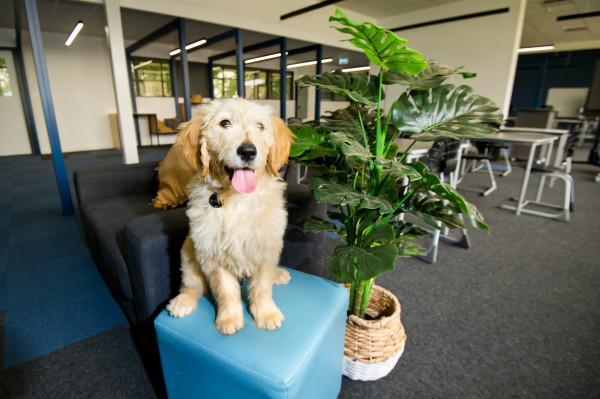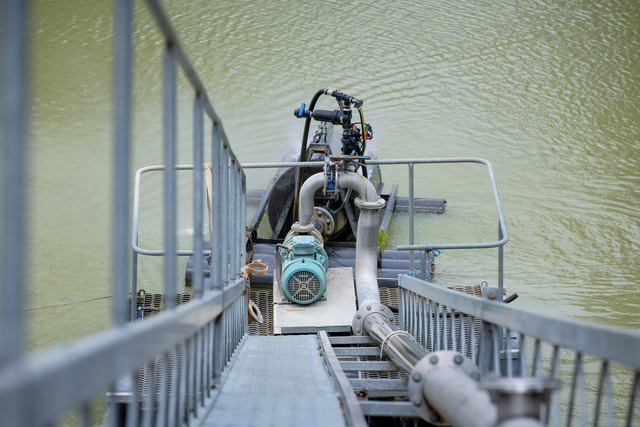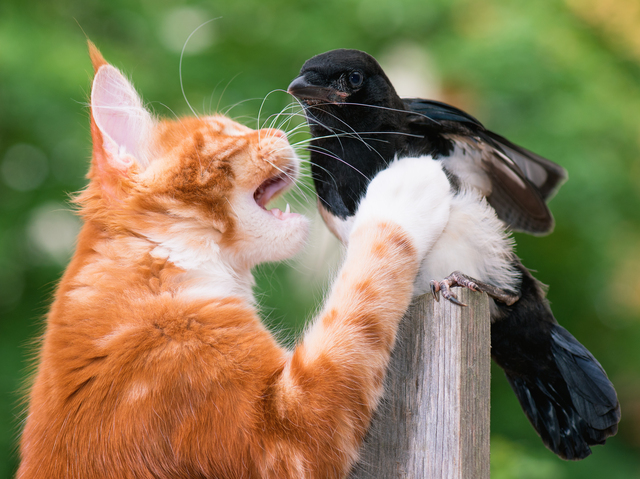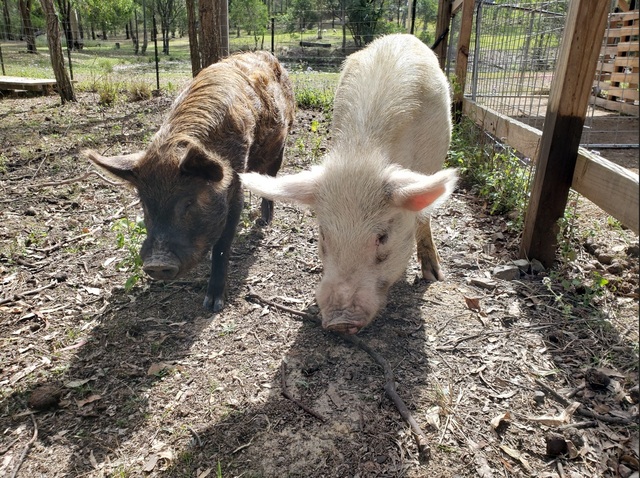WALLACE the groodle might look like your normal cute puppy, but little does he know he will have a big role to fill at Irymple Secondary College.
The four-month-old golden retriever-poodle cross will be introduced to the school community next week.
Student wellbeing co-ordinator and Rachel Thomas says the idea is to get Wallace to help students who struggle to regulate their emotions, and to boost staff morale.
Ms Thomas, who is also Wallace’s owner, says children will be taught how to interact with the dog, who will become a companion to the students.
“He will spend most of his time with me, or with the leaders in their office and that will be for our walk-in students,” Ms Thomas said.
“When there are kids who have to leave the classroom because of their behaviour or anxieties, that’s when we have our walk-ins.”
The concept of therapy and companion dogs is not a new one, but it seems the breadth of issues they can help with continues to grow.
Therapy dogs differ from service dogs, who are specifically trained to help people with psychological conditions or physical disabilities — such as guide dogs.
There are visitation dogs — often household pets that are trained to be taken into hospitals, nursing homes or schools to provide comfort to residents or students.
Other facility dogs that can help assist residents with Alzheimer’s, dementia or other mental illnesses are often housed at the facilities.
Dogs (along with other animals such as cats) are being more widely used in prisons — particularly in the US — where they can provide a calming influence on inmates while also giving them a sense of purpose and responsibility.
In 2018, therapy dogs were used at a school to help survivors of a school shooting in the US state of Florida, where they “participated in classes all day, made lots of new friends and provided unconditional love and comfort”, according to the Humane Society of Broward County.
And even during our own current crisis in Australia, therapy dogs are there to help.
Ember, a crisis dog, is helping to ease the trauma caused to people in bushfire-affected areas.
“She’s been part of the process of making people a bit calmer and happier in their roles,” Natalie Brindle, leading firefighter with the Country Fire Authority, told Channel Seven news.
“A lot of people deal with high-stress work, and they’re having to make a lot of decisions.
“So when they have some downtime, it’s good to focus on something positive.”
It will be interesting to follow the story of Wallace as he integrates with the Irymple Secondary College community — and it will be interesting to see whether other Sunraysia schools or community groups introduce their own programs involving dogs.
Because there’s little doubt of the positive influence having these dogs can have on people from all walks of life.
Is it any wonder they call dogs man’s best friend?








